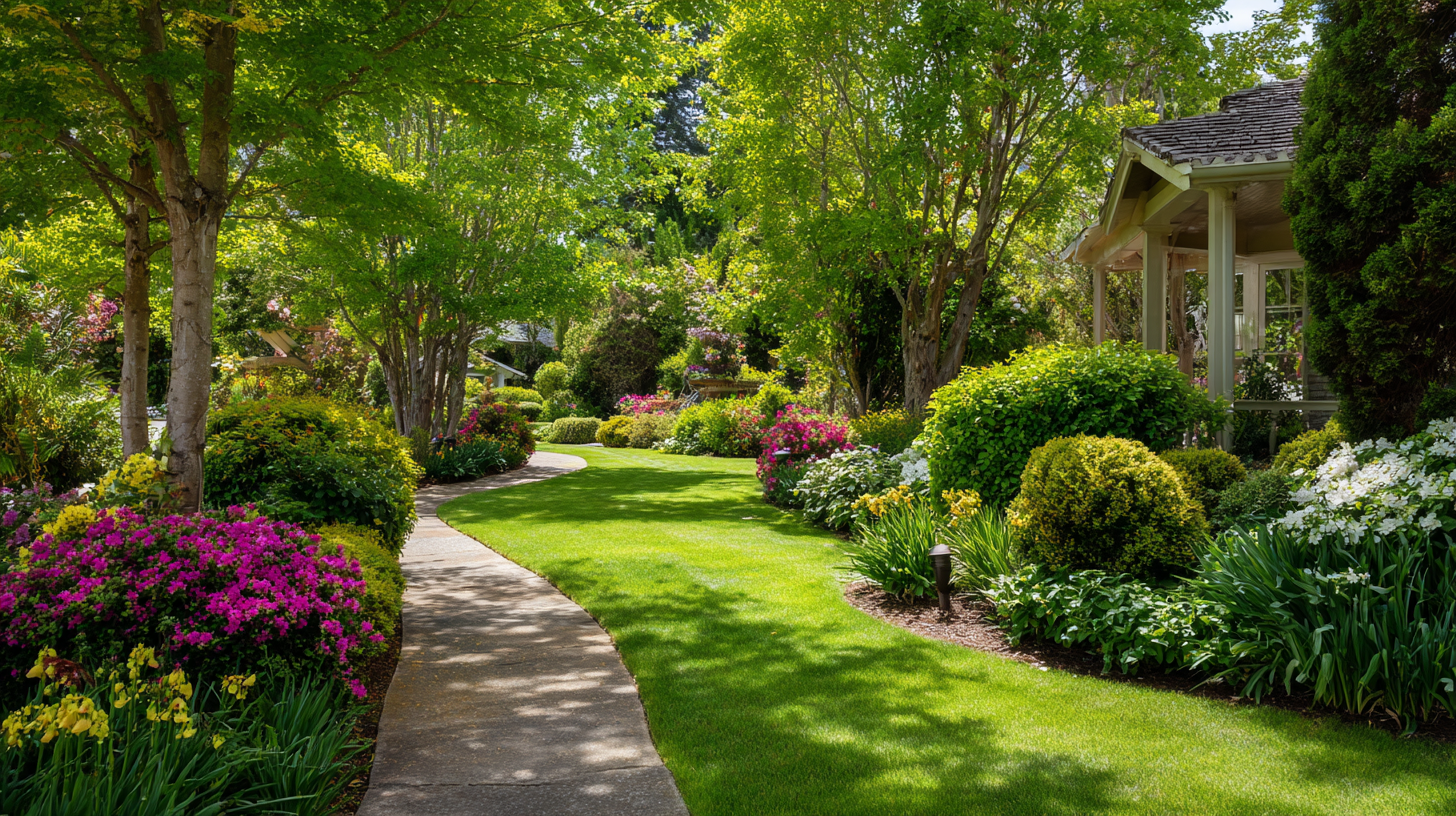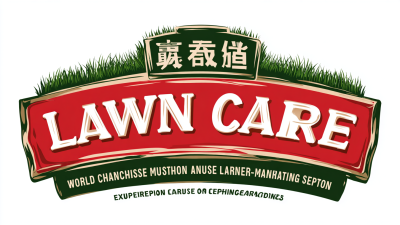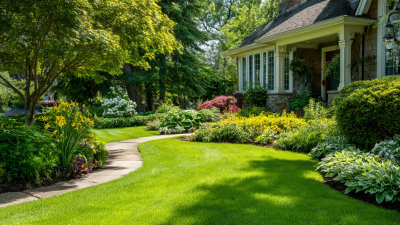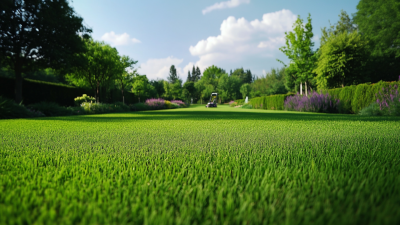Blog
Signature Lawn and Landscape LLC
Top 5 Essential Maintenance Lawn Care Tips for a Lush Green Yard
A lush green yard is not just a visual treat; it is a testament to the dedication and care invested in maintaining one’s lawn. As we step into 2025, the importance of effective maintenance lawn care practices becomes even more evident. With the evolving climate and urban demands, homeowners are challenged to adopt a systematic approach to nurturing their lawns to ensure vibrant and healthy growth year-round.

This article dives into the top five essential maintenance lawn care tips that will help you cultivate a stunning green yard. By understanding the interplay of water, nutrients, and proper mowing techniques, you can create an environment where your grass can thrive. Whether you are a seasoned gardener or a novice homeowner, these actionable tips will set the foundation for a beautiful outdoor space that enhances your property’s curb appeal. Get ready to transform your lawn into a magnificent oasis with timely and efficient maintenance lawn care strategies!
Choosing the Right Grass Type for Your Climate and Soil Conditions
Choosing the right grass type is crucial for cultivating a lush green yard that suits your climate and soil conditions. A sustainable lawn begins with selecting grass breeds that thrive in your local environment. For instance, fall is considered an ideal time for planting grass seed, as the cooler temperatures promote root development, making the lawn healthier in the long run. Ensure you prepare your lawn adequately by aerating the soil and applying a suitable mulch to retain moisture and encourage germination.

When selecting grass, consider the light conditions in your yard. No turfgrass will flourish in complete shade, so it's essential to assess the amount of sunlight your yard receives. Additionally, for areas prone to extreme weather, such as cold winters or arid conditions, choose grass types known for their resilience. Look for blends that combine various species, as this can enhance durability and adaptability, providing a beautiful yard while also maintaining ecological balance.
Understanding the Importance of Proper Lawn Fertilization Techniques
Proper lawn fertilization is crucial for maintaining a lush green yard, as it provides the essential nutrients needed for optimal grass growth. According to the Nutrient Management Institute, a well-fertilized lawn can achieve a growth rate that is 25% higher than an under-fertilized one. This increase in vigor not only enhances the aesthetic appeal of the yard but also contributes to improved drought resistance and pest resilience.
It's important to understand the macronutrients—nitrogen, phosphorus, and potassium—each play a distinct role in lawn health. A study published by the American Society of Agronomy emphasizes that nitrogen promotes leaf growth, phosphorus supports root development, and potassium increases overall hardiness against environmental stresses. Balancing these nutrients through soil testing ensures that the grass receives the right amount for its growth stage, leading to a flourishing landscape.
Moreover, timing and technique are pivotal in lawn fertilization. The fertilizer should be applied in early spring and fall when the grass is most actively growing. Research from the Lawn Institute indicates that using slow-release fertilizers can significantly decrease nutrient runoff, enhancing long-term soil health while also meeting the immediate needs of your lawn. By prioritizing these proper fertilization techniques, homeowners can achieve and sustain a vibrant, healthy yard.
Top 5 Essential Maintenance Lawn Care Tips for a Lush Green Yard - Understanding the Importance of Proper Lawn Fertilization Techniques
| Tip Number | Maintenance Tip | Importance | Recommended Frequency |
|---|---|---|---|
| 1 | Regular Mowing | Promotes healthy growth and reduces weeds | Weekly |
| 2 | Proper Fertilization | Provides essential nutrients for a lush lawn | Every 6-8 weeks during growing season |
| 3 | Adequate Watering | Keeps grass hydrated and resilient | 1-2 inches per week |
| 4 | Weed Control | Prevents competition for nutrients and water | As needed |
| 5 | Aeration | Improves oxygen flow and nutrient absorption | Once a year |
Mastering the Art of Regular Lawn Mowing for Optimal Growth
Mastering the art of regular lawn mowing is crucial for achieving a lush green yard. According to the American Society of Landscape Architects, maintaining the optimal mowing height can significantly affect a lawn’s health. For most grass types, a mowing height of 2.5 to 4 inches is recommended. This height promotes deeper root growth, reduces weed proliferation, and enhances the lawn's drought resistance. Research indicates that lawns mowed at the correct height can withstand heat stress better, which is particularly important in regions with fluctuating temperatures.
Moreover, the frequency of mowing can also impact the overall health of your lawn. The National Association of Landscape Professionals suggests mowing about once a week during the growing season. This prevents the grass from becoming too long, which can result in clumping that may suffocate the blades beneath. Additionally, leaving grass clippings on the lawn can return up to 20% of the lawn’s nitrogen needs back into the soil, translating to reduced fertilizer costs while enhancing soil health. As you refine your mowing practices, remember that a well-maintained lawn not only boosts curb appeal but also contributes to a more sustainable environment.
Implementing Effective Watering Practices for a Healthy Yard
 Implementing effective watering practices is crucial for maintaining a healthy yard. Many homeowners mistakenly believe that more frequent watering will yield a lush lawn, but it's about how wisely you water rather than how often. Experts recommend watering your lawn deeply but less frequently to encourage deep root growth, which will help grass withstand summer heat and drought. Watering early in the morning is optimal, as it reduces evaporation and allows the grass to absorb moisture before the heat of the day sets in.
Implementing effective watering practices is crucial for maintaining a healthy yard. Many homeowners mistakenly believe that more frequent watering will yield a lush lawn, but it's about how wisely you water rather than how often. Experts recommend watering your lawn deeply but less frequently to encourage deep root growth, which will help grass withstand summer heat and drought. Watering early in the morning is optimal, as it reduces evaporation and allows the grass to absorb moisture before the heat of the day sets in.
In addition to timing, understanding soil moisture levels is essential. Instead of following a strict schedule, homeowners should check the soil's moisture to determine when watering is necessary. This approach not only conserves water but also helps prevent common issues such as summer burn and fungal growth. Moreover, leaving grass clippings on the lawn after mowing can significantly boost its health by returning nutrients back to the soil, making your yard greener and more resilient. By adopting these smart watering strategies, you can achieve a lush and vibrant yard without excessive water use.
Identifying and Managing Common Lawn Weeds and Pests Efficiently
Maintaining a lush green yard requires not only regular mowing and watering but also the effective management of common lawn weeds and pests. Weeds can quickly dominate your lawn, competing for nutrients, water, and sunlight. To manage them, start by identifying the types of weeds that infest your yard. Early detection is crucial; pulling them out by the root can prevent them from spreading. Additionally, applying a pre-emergent herbicide in the spring can help stop weed seeds from germinating, keeping your lawn healthy.
In addition to weeds, pests like grubs, ants, and aphids can cause significant damage if left unchecked. Monitoring your lawn regularly for signs of pest activity is essential. For instance, patches of brown grass may indicate grub infestations. Employing organic pest control methods, such as introducing beneficial insects, can be effective and less harmful to the environment. Furthermore, maintaining healthy soil through proper aeration and fertilization increases the lawn’s resilience against both weeds and pests, creating a thriving ecosystem that promotes lush growth.
Top 5 Common Lawn Weeds and Pests
Related Posts
-

World Class Chinese Manufacturing Delivering Exceptional Lawn Care and Maintenance Solutions
-

Navigating the Future of Lawn Care in 2025 Strategies for Global Buyers
-

How to Transform Your Lawn and Yard with Effective Maintenance Strategies
-

Unveiling Global Opportunities in Yard Care Maintenance at the 137th Canton Fair Success
-

Boost Your Professional Yard Maintenance Business with Insights from the 137th Canton Fair
-

Discover China's Premier Lawn Care Solutions: Quality Products for Global Buyers!


Share On: